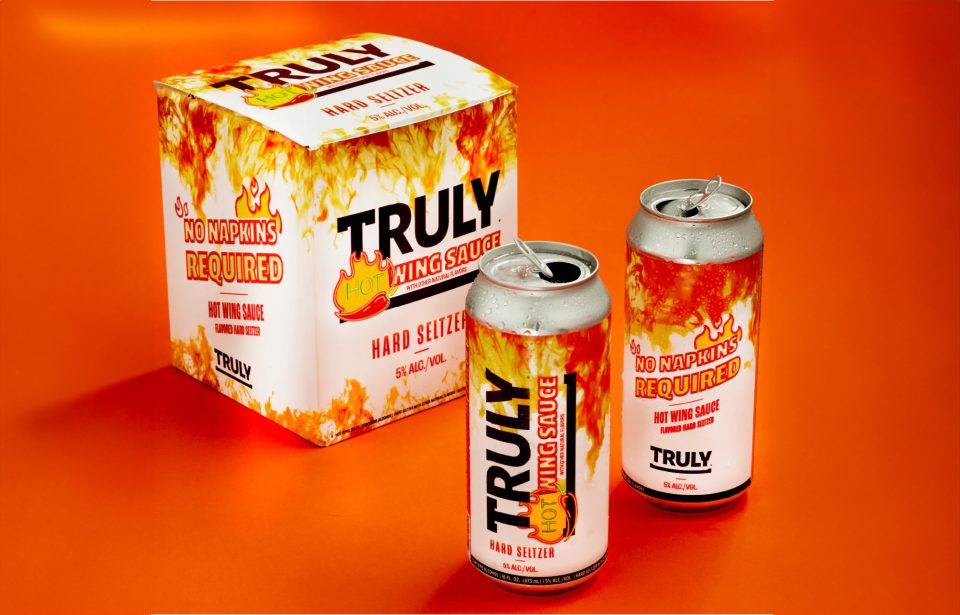 In early July, I got to collaborate with Crawford Moran & Matt on a beer. After Crawford and I got to talking, a beer I’d always wanted to try surfaced – a dark saison. I really thought it would be interesting to take a darker spin on the light bodied saison. On brew day we went to work. Starting around 7:30 am we fired up the grain mill. All in all, this beer took about 7 hours to brew from start to finish, and has been fermenting about 3 months.
In early July, I got to collaborate with Crawford Moran & Matt on a beer. After Crawford and I got to talking, a beer I’d always wanted to try surfaced – a dark saison. I really thought it would be interesting to take a darker spin on the light bodied saison. On brew day we went to work. Starting around 7:30 am we fired up the grain mill. All in all, this beer took about 7 hours to brew from start to finish, and has been fermenting about 3 months.
This Thursday, yours truly (@ATLBeerMaster) , Jennifer Mann (@ATLBeerChick), Wendy Rutherford (@ATL_Events), and John Ashbaugh (@AtlantaBeer) with 5 Seasons West will be getting together to tap the Dark Saison. It will be a pretty cool evening, Wendy has “negotiated” some specials including $3 pours of the Dark Saison, $5 Svedka vodka cocktails, $5 house red & white wine, & 2 for 1 app specials! Be sure to read on to see how this beer is brewed.
5 Seasons Westside -10/7, 6:30-8:30 pm
1000 Marietta St NW
Atlanta, GA
Brewing craft beer takes a bit of time. ( It’s basically an all day affair for just one batch.) The short version – You have to crush your grain, Mash in, sparge, boil, cool, transfer to your fermenter, pitch yeast. and then wait. There is a good bit to talk about in the brewing process. Fair warning – this is a simplified, short, version of the process.
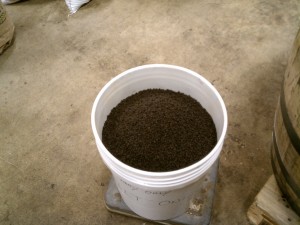 |
Grain. Every beer begins with grain. Malts to be exact. Malts are crushed in a grain mill to allow water to soak out the fermentable sugars That’s where your alcohol will come from. In this case we used 6oo lbs of malt, including.. |
 |
Mashtun. This is your first step. The grain mill feeds the grain into the mash tun. Here it is soaked between 155-160 degrees. The sugars are being pulled out of the grain. You may hear this referred to as the “tea” |
 |
Sparging. A very important step in the process. The spray nozzles you see is a way of slowly dripping water through the grain to get all the sugars out. This creates a sweet tasting “tea like” liquid called wort. This is a delicate process. If it is done at the wrong temperature, or the pH is incorrect, you will extract tannins from the husks of the grain. This will bitter your beer. (In a bad way.)
|
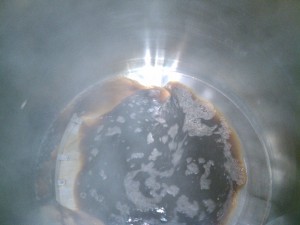 |
Brew Kettle. The image to the left is the wort filling up the kettle from the mash tun. Here the wort is boiled, and hop additions are made. Note: What hops are used, and when they are added change the resulting flavor of the beer. |
 |
Hop Addition #1: Whole flower Willamette hops are being added in a bag early in the boil. The bag(s) are tossed in to soak like a teabag. I actually used a stick to fully soak the bags. As you can imagine, it’s a bit warm. |
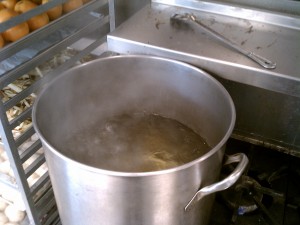 |
Belgian Candi Sugar. Belgian candi sugar comes in light & dark versions. It’s literally rock candy you’ve seen as a kid. Candi sugar is commonly used in dubbels & tripels. It boosts alcohol in the beer without adding too much to the body. (Heavier mouthfeel, thick body, etc.) In the image on the left, we are boiling the light candi sugar to pour into the boil. |
 |
Hop Addition #2. This secondary hop addition is a noble hop Hallertau. This are not bagged, but allowed to freely boil. |
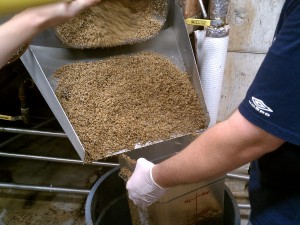 |
Cleaning the tun. As you can see the water has been drained, leaving spent grain behind that needs to be emptied. What I am doing her is harvesting some of the grain to be used to make “Spent Grain” bread in the kitchen. The remaining grain is left for farmers to use as feed/fertilizer, etc. |
 |
Cooling: This is yet another very important step in the process. Water boils at 212 degrees. That’s WAY too hot to introduce live yeast cells. It would be like throwing live crabs into boiling water. They would die. The boiling wort has to be cooled to at least 70 degrees to allow the yeast to be pitched. (next entry) The picture to the left has multiple connections. Here this is connected to the brew kettle. Behind this panel is a series of cooling plates that chills the wort to 70 degrees is literally seconds. Here the beer is being chilled and pumped from the kettle to the fermenter. (Pic to follow) |
 |
Yeast Pitch. The yeast is being pitched into the fermenter here, as it fills. We used a Belgian Saison yeast. |
 |
The Fermenter. Dubbed “The Michael Jordan” because it’s fermenter 23. The location of the primary fermentation. Here the yeast goes to work. |
 In early July, I got to collaborate with Crawford Moran & Matt on a beer. After Crawford and I got to talking, a beer I’d always wanted to try surfaced – a dark saison. I really thought it would be interesting to take a darker spin on the light bodied saison. On brew day we went to work. Starting around 7:30 am we fired up the grain mill. All in all, this beer took about 7 hours to brew from start to finish, and has been fermenting about 3 months.
In early July, I got to collaborate with Crawford Moran & Matt on a beer. After Crawford and I got to talking, a beer I’d always wanted to try surfaced – a dark saison. I really thought it would be interesting to take a darker spin on the light bodied saison. On brew day we went to work. Starting around 7:30 am we fired up the grain mill. All in all, this beer took about 7 hours to brew from start to finish, and has been fermenting about 3 months.













